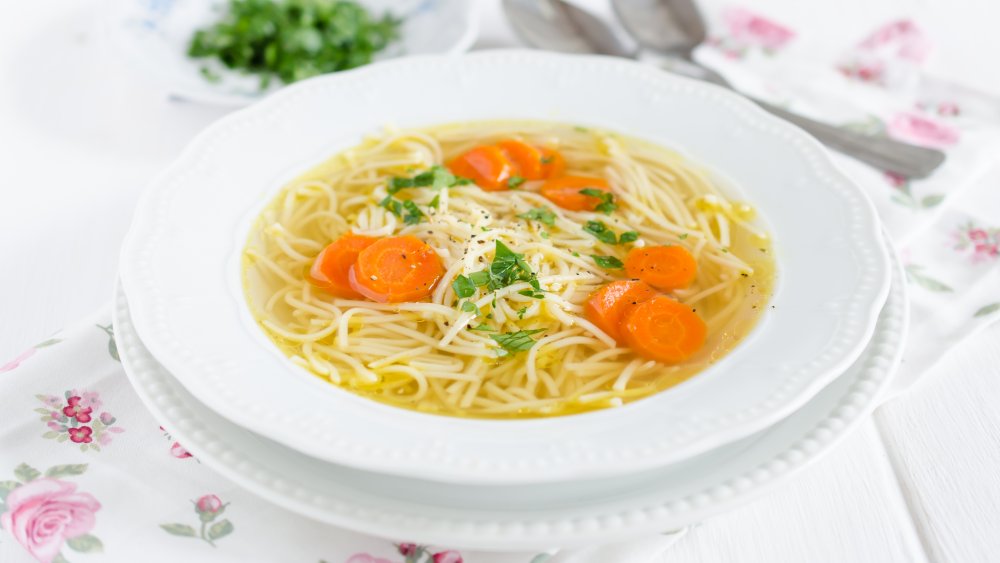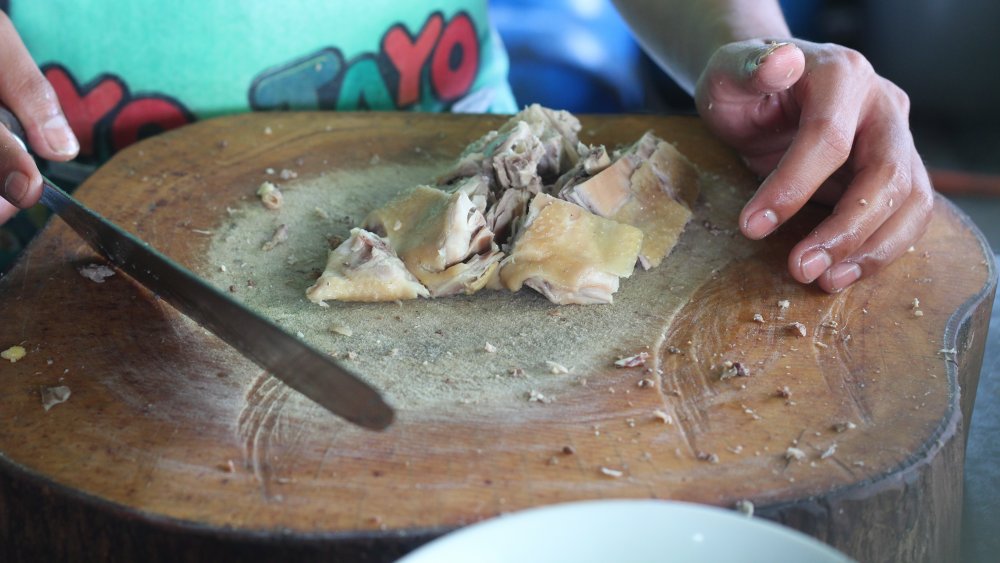The Biggest Mistake You're Making With Chicken Soup
Chicken soup is one of several foods often hailed as a cure-all, but it's the only one so beloved that it's had a successful self-help book franchise named after it. There's no Nice Cup of Tea for the Soul, after all, much less Stiff Shot of Whiskey for the Soul — and Spirulina Kale Smoothie for the Soul sounds like an all-time worst seller, for sure.
Chicken soup, however, is known worldwide for its curative, restorative powers which even medical science affirms. According to Duke University, it's not just the vitamins and minerals in the vegetables, nor is it strictly the throat-soothing power of hot liquid — the chicken itself not only supplies essential body-strengthening protein but also contains an amino acid that can help heal the lungs. Yay chicken soup! It really is the universal panacea.
If you want to amp up the healing power by cooking your own chicken soup instead of just opening a can, all the better, but it's best if you can avoid the number one pitfall of most homemade chicken soups: tough, dry, overcooked chicken. If you want your chicken uniformly tender and juicy, there's one thing you should not do, and that is to cook the chicken whole.
Why you need to carve up the chicken before it's done cooking
As anyone who's ever roasted a chicken knows, the legs take a lot longer to cook than do the more delicate breasts. There are numerous workarounds and hacks including brining, spatchcocking (removing the backbone to flatten), or cooking the chicken in pieces, but unless you like dry breasts or slightly undercooked legs, roasting a chicken isn't quite the no-brainer it seems. When you're cooking a whole chicken for soup, the same thing often happens — you keep boiling away until the legs are done, but by that time the breast has dried out. The solution for soup, luckily, is more straightforward (if slightly messy) than for roasting: all you need to do is remove the chicken before the soup is done.
Chef Molly Baz (via Bon Appetit) says to take the whole chicken out of the pot once the breasts reach 155 degrees on a meat thermometer. Carve up the chicken, putting the breasts aside and returning the rest of the meat (legs, wings, back) back in the pot. Once the legs are done cooking, remove all of the chicken parts, then shred all the meat (from breasts as well as legs) and return the meat to the pot for a few minutes until any pasta, rice, or other last-minute additions are done cooking and all of the seasonings are adjusted to taste.

